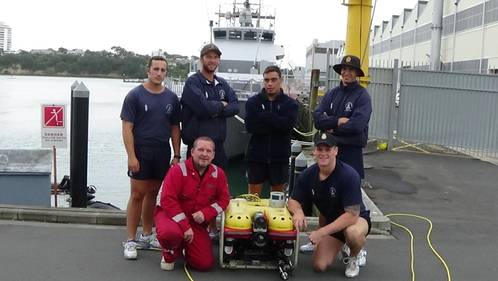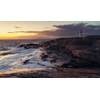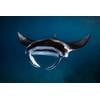A team from the Royal New Zealand Navy has recently finished an intensive ROV training course, delivered by The Underwater Center at the Naval Base at Devonport, New Zealand.
The nine-day course focused on in-water operation training of the Saab Seaeye Falcon ROV, which is regularly used by the Navy for reconnaissance and security missions.
Warships were berthed very close-by, allowing the candidates to work under and around the vessels, carrying out a range of training exercises.
The course was split between classroom lectures and practical/in-water operational training and was specifically tailored by The Underwater Center for the Navy, allowing the candidates to train within their own site with their own ROVs.
The candidates were put through their paces by ROV Training and Operations Superintendent, Paul Bury, who has 15 years’ experience in the ROV industry, and has been training industry-ready ROV pilot technicians for over 13 years at The Underwater Center.
“We spent an intensive nine days with the team teaching them all aspects of the Seaeye Falcon,” Bury said.
“The ROV has been used by the Navy for a variety of operations – from reconnaissance prior to deeper diving and assisting in the recovery of sunken aircraft/helicopter, to helping with marine accident investigations. The ROV can also be utilized for security reconnaissance for harbor inspections, hull inspections, mine location and disposal.
“Throughout the duration of the training the water visibility was poor – less than 1.5m. This added to the challenge, but gave the candidates the best possible training in learning how to navigate in poor or zero visibility conditions. It meant that sonar training became essential and the class were able to fly the Falcon without cameras – using sonar images and sensor readings alone.
“Once the team were accustomed to close-quarters control and navigation, the ROV was taken on longer and longer excursions, until eventually, the ROV was able to travel around the entire basin to the full extent of the tether. The long excursions allowed the candidates to identify previously unknown sonar targets and to investigate them.
“To increase the challenge, the candidates were also tasked with searching and then recovering sunken objects using the sonar for locating and then the manipulator for picking-up and recovering items. This kept the team busy with tasks getting progressively more difficult as they improved their skills.”
LT CDR Benjamin Martin, Mine Clearance Diving Officer at Royal New Zealand Navy, added: “The Royal New Zealand Navy Dive Training School is the lead underwater training facility in the New Zealand Defence Force. It provides trained personnel to the Littoral Warfare Unit, several Army units, the New Zealand Police and the New Zealand Customs Service.
“Remote technologies are highly valued by the New Zealand Defence Force for the range of options they provide. Since its introduction into service, the Royal New Zealand Navy has utilized an observation class ROV to conduct operations ranging from hull inspections to deep recovery of helicopters in the alpine lakes of the South Island.
“This wide variety of operating environments requires the ROV pilots to have a high standard of training, which The Underwater Center provided in a very professional, thorough manner. Thanks to The Underwater Center for the excellent training.”














 December 2025
December 2025



